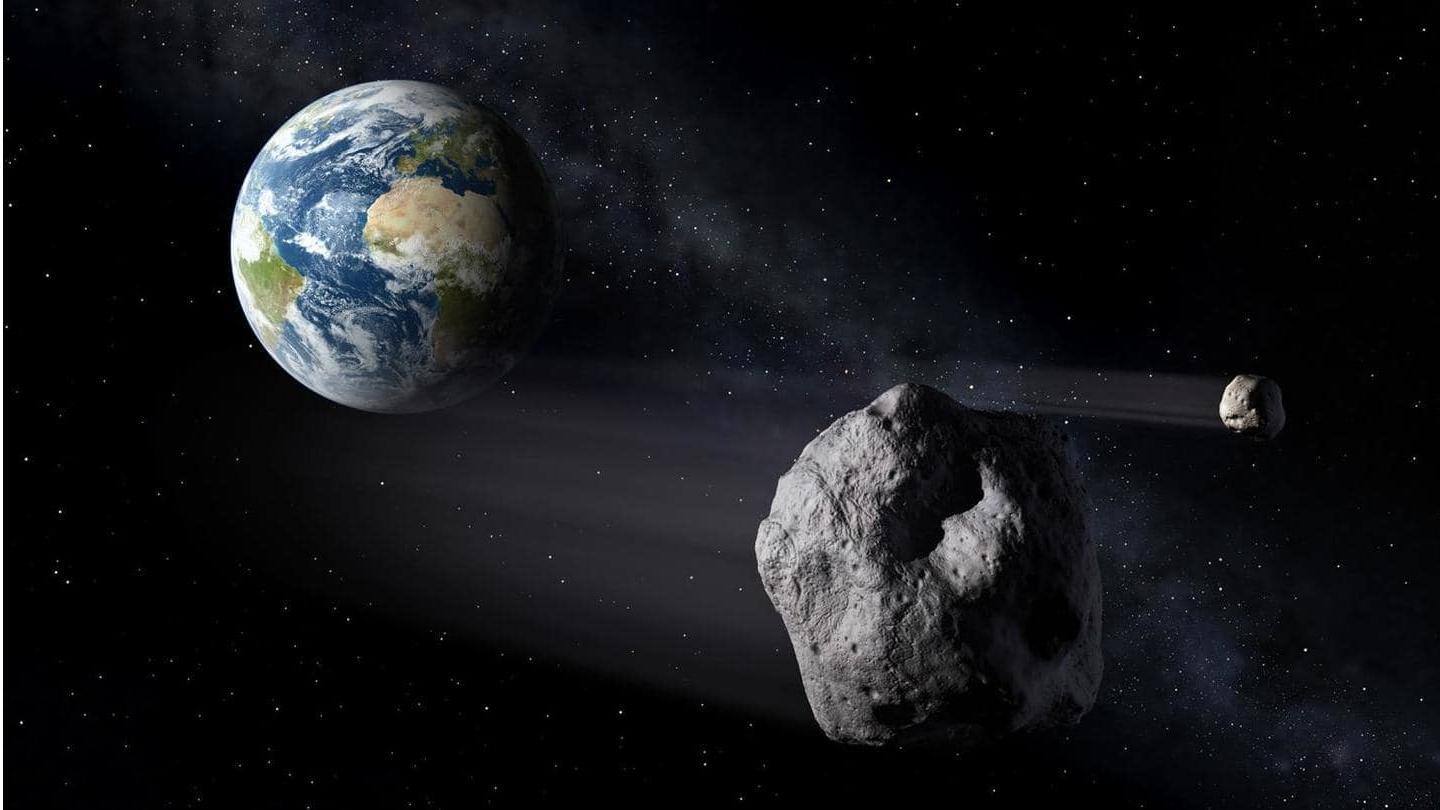
Asteroid 2022 UY1 zooms past Earth: Here are the details
What's the story
Earth has had some close calls with asteroids in the last few months.
Today, an asteroid named 2022 UY1 flew past Earth at 10:47 am IST, at a distance of 6.87 million km.
It belongs to the Apollo group of asteroids. Fortunately, this Near-Earth Object (NEO) didn't cause any harm as it crossed us at a safe distance.
Here's what we know.
Context
Why does this story matter?
Seems like we will not be unprepared for asteroid attacks in the future, thanks to NASA's amazing facilities.
The smashing success of the DART mission further proves that the space agency is well-equipped to dodge these menacing rocks away from our planet.
Anyway, there is no need to worry now since the asteroid headed our way has crossed us without causing any damage.
Description
The asteroid ranges roughly 22-50 meters in size
Asteroid 2022 UY1 is approximately 94 feet (29-meter) in size. It was spotted recently on October 18, 2022.
The space rock takes approximately 1,040 days to complete one orbit around the Sun.
Its perihelion, or the closest point to the Sun, is 152 million km while the aphelion, or the farthest point from the Sun, is 449 million km.
Details
The asteroid zoomed past Earth with a velocity of 9km/s
According to NASA, an NEO is considered a potentially hazardous object (PHO) when it approaches Earth within a distance of 7.5 million km, and measures greater than 140 meters.
The asteroid 2022 UY1 flew past Earth on October 25 at 10:47 am IST with a velocity of 9km/s or 32,400km/h.
It came as close as 6.87 million km to Earth.
Facts
The main asteroid belt is found between Mars and Jupiter
Numerous asteroids, ranging a few meters in size, frequently pass between the Earth's and Moon's orbit. They are found in a region between Mars and Jupiter termed "the main belt."
Experts at NASA claim that currently known asteroids are not a threat to our planet, at least for the next century. Nevertheless, the distance at which these celestial objects approach the Earth seems daunting.
Information
How are NEOs monitored?
NASA's Jet Propulsion Laboratory's Center for NEO Studies is in-charge of detecting NEOs and maintains the 'close approach' record on a daily basis. Furthermore, its automated collision monitoring system, Sentry, keeps track of known asteroids and documents the discoveries of new ones.